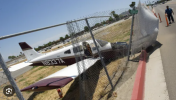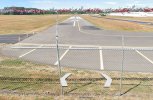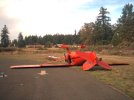infrequentFlyer
Pre-Flight
- Joined
- Oct 19, 2023
- Messages
- 44
- Display Name
Display name:
infrequentFlyer
Hello,
While reading about landings and approaches, I often see "pull power when you are over the airport fence" or something of the like.
What exactly is this fence? At first I thought it was a real fence, but that doesn't seem like something that would be standard or the same at most runways. Is "the fence" slang for one of the runway markings? (Runway width stripes look kinda like a fence, or maybe the chevrons?)
Please enlighten me!
While reading about landings and approaches, I often see "pull power when you are over the airport fence" or something of the like.
What exactly is this fence? At first I thought it was a real fence, but that doesn't seem like something that would be standard or the same at most runways. Is "the fence" slang for one of the runway markings? (Runway width stripes look kinda like a fence, or maybe the chevrons?)
Please enlighten me!



